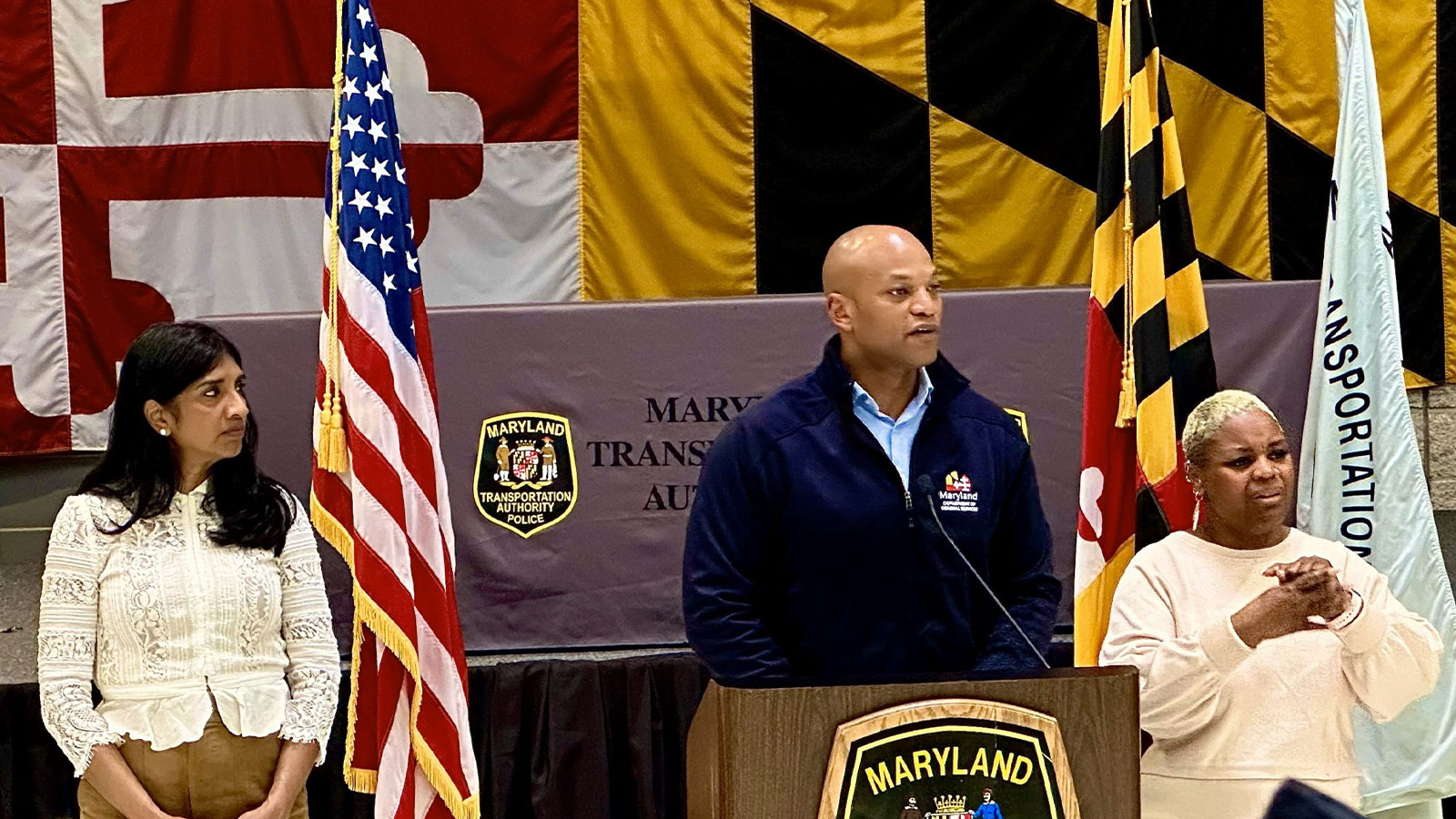It is still unclear when the rubble of the Francis Scott Key Bridge and the Dali container ship will be removed from the Patapsco River following the structure’s collapse on March 26.
The Unified Command spent 10 hours cutting and lifting a 200-ton piece of the North section of the bridge out of the channel on March 30. They are scheduled to remove an estimated 350-ton span of the bridge on April 1, barring lightning.
Governor Wes Moore stressed the need to prioritize safety over speed while cleanup efforts are underway.
“I know there’s an urgency to move fast, and nobody feels that urgency more than the people standing up here today, but we have to be clear on the risks,” Moore said during an April 1 press conference. “This is a steel bridge that is sitting on top of a container ship in the middle of the Patapsco River. We’re talking about tons of steel that is mangled and tangled up and water that is so murky and so filled with debris that divers cannot see any more than a foot or two in front of them.”
Crew members remained on board the Dali, which has a section of the bridge across its bow. Unified Command and the National Transportation Safety Board (NTSB) have reportedly stayed in close contact with the seafarers.
Crew members’ living quarters were not impacted by the fall of the bridge and kitchen operations remain intact.
Unified Command has described the bridge’s remains as “chaotic wreckage.” According to U.S. Coast Guard Rear Admiral Shannon Gilreath, the steel beams are intertwined, making it difficult to determine where to cut them before they can be hoisted out of the water.
“It’s turning out to be more challenging than we thought it might be just in trying to determine how they’re tangled and how we’re eventually going to cut through them,” Gilreath said.
As authorities work to remove the debris, a temporary 11-foot channel for commercial vessels has opened under the Northern part of the bridge that remains standing. The action is a step in restoring transit to the Port of Baltimore.
The channel will be marked with government lights to aid vessel navigation. A second, temporary 15-foot channel is expected to open on the Southwest side of the waterway in the ensuing days.
Moore said at least 8,000 port jobs have been affected by the collapse.
“These are individuals who work hard, never complain and get the job done,” Moore said. “Many have continued to work on the docks. Many haven’t been able to get back to work at all.”
“We want to let them know this: we have their backs because they’ve always had ours,” Moore added.
Following a request by the state of Maryland, the Small Business Administration (SBA) is now deploying low-interest loans of up to $2 million to businesses affected by the incident. Since March 30, the agency has received 57 applications for the relief.
“We cannot rebuild the bridge until we clear the wreckage, but I’m telling you, we are going to get this done,” Moore said. “We will clear the channel, we will move the Dali and we will rebuild the Francis Scott Key Bridge.”
Megan Sayles is a Report for America corps member.
Source: AFRO
Featured image: Maryland Governor Wes Moore gives updates on the collapse of the Francis Scott Key Bridge in Baltimore on April 1 and efforts to recover from the disaster with Lt. Gov. Aruna Miller (left) and April Jackson-Woodard, a freelance sign language interpreter, at his side. (AFRO Photo / Alexis Taylor)
Megan Sayles (msayles@afro.com) is a business reporter for The Baltimore Afro-American paper. Before this, Sayles interned with Baltimore Magazine, where she wrote feature stories about the city’s residents, nonprofits and initiatives. Her love of music inspired her to be a writer. At a young age she realized it was not the melody that she was so infatuated with, but the lyrics that made up the song and connected with listeners. Sayles grew up in Pasadena, Maryland, and is a 2021 graduate of the University of Maryland, where for her senior capstone project she reported on how the coronavirus and inequality intersected in Baltimore. She also worked as a staff writer and copy editor for campus publications, including Stories Beneath the Shell and The Black Explosion. Sayles teamed up with a partner to report on how the pandemic had put many more responsibilities on the oldest child in families. The Associated Press and other news organizations picked up her story.















